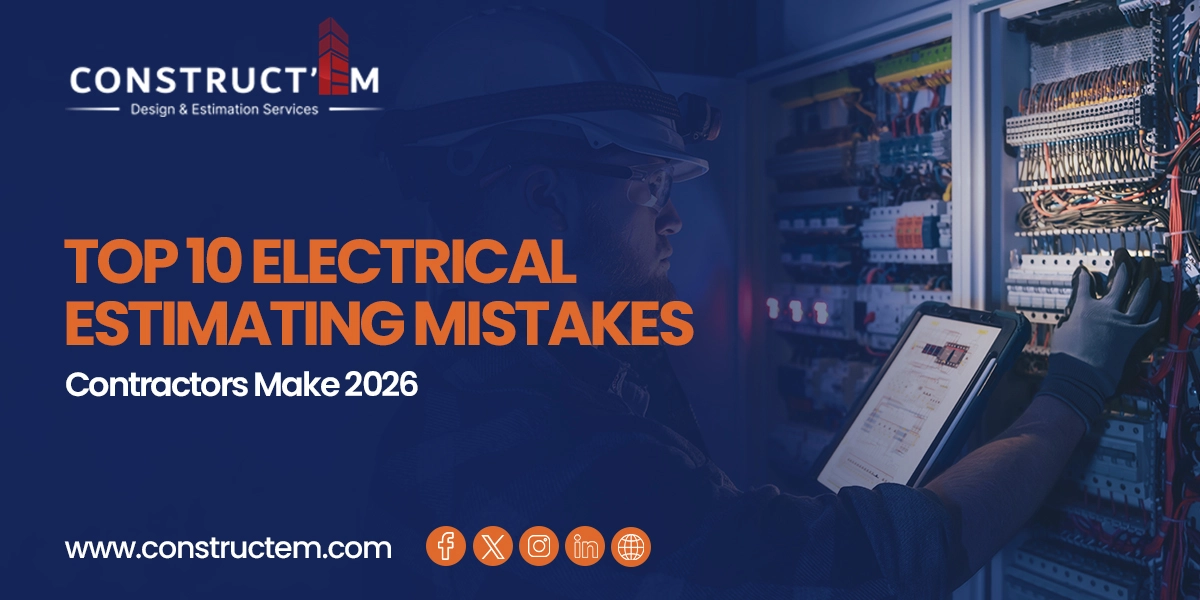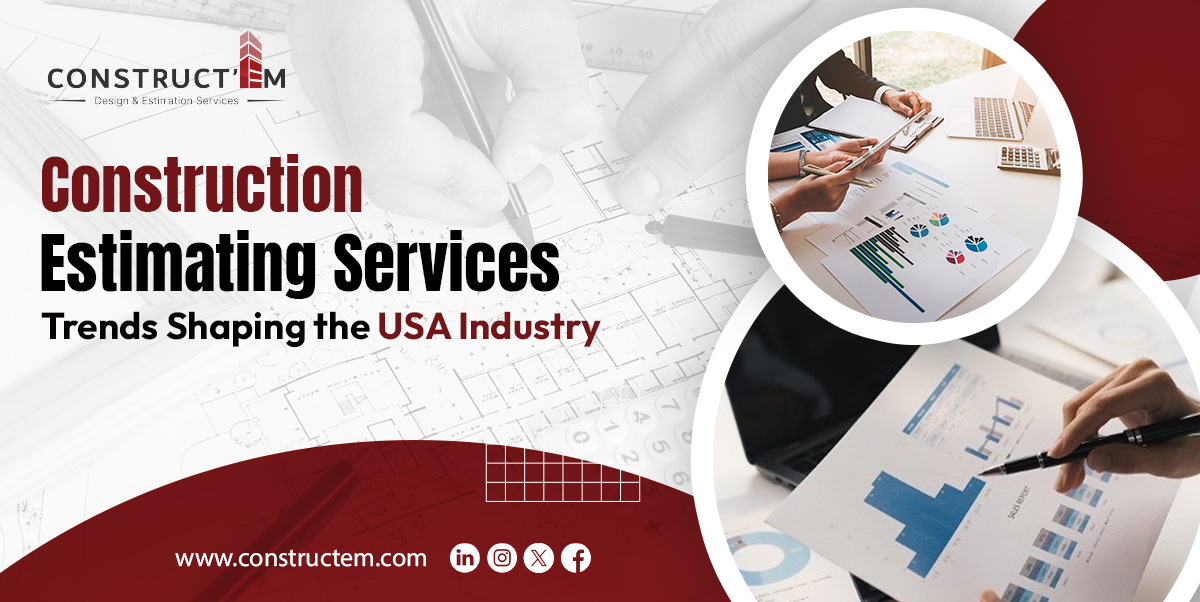

Have you ever wonder how large construction firms confidently bid on multimillion-dollar projects without fear of sudden cost overruns? Behind every winning bid lies the expertise of skilled estimators who combine technology with years of market experience to produce accurate and competitive estimates.
Any project’s success depends on construction estimation, which is one of the most crucial aspects of construction. For both commercial and residential estimating, a smooth bidding procedure, effective project budgeting, and precise cost estimation are crucial.
The most recent advancements in construction cost estimating services that are impacting the USA market and ensuring that projects are finished to the highest standards of quality, on time, and within budget are examined in this article.
For Construction Estimating Servicesspreadsheets and manual calculations are quickly becoming outdated. Specialized estimating software is being used by an increasing number of construction organizations in an effort to improve accuracy and productivity. Tools like Procore, Plnswift, and Builder trend are revolutionizing the way estimators work by enabling them to provide thorough project budgeting reports in a fraction of the time.
Spreadsheets and manual computations are rapidly becoming obsolete for construction estimating services. A growing number of construction companies are using our professional Construction takeoff services tools and techniques to increase accuracy and productivity. Programs like Bluebeam, PlanSwift, and https://constructem.com/trend have revolutionized the way estimators work by enabling them to provide comprehensive project budgeting reports in a fraction of the time.
Cloud-based estimating solutions are becoming more popular since they let teams work together from multiple places with ease. By facilitating real-time changes, these platforms guarantee that all parties involved have access to the most recent construction estimating services information. For large-scale building projects involving numerous teams and subcontractors, this tendency is especially helpful.
In construction estimates, using past data to guide future projects is one of the most important trends. Estimators are able to spot trends, anticipate possible problems, and develop more precise project budgeting plans by examining previous projects. This method is particularly useful for residential estimation and Construction Estimating Services since comparable projects frequently have similar features.
The way estimators approach cost estimating is changing as a result of predictive analytics. Construction estimating services may more accurately predict labor needs, material costs, and any delays by utilizing machine learning algorithms. In the bidding process, where accurate estimations might mean the difference between gaining and losing a contract, this technology is especially helpful
Real-time data collecting is being made possible by the deployment of IoT (Internet of Things) sensors on building sites. Sensors can monitor worker productivity, equipment performance, and material consumption, giving estimators the most recent data to improve their cost estimation models. In commercial estimating, where even little differences can result in large cost overruns, this tendency is especially noticeable for the success of the construction Estimating Services.
In the building sector, eco-friendly products and methods are becoming more and more expensive, and our estimators are taking this into account. From recycled building materials to energy-efficient windows, this covers it all. Given that customers are demanding greener solutions, accurate construction estimating services is crucial for both residential and commercial sustainable projects.
These days, estimators take into account a project’s long-term costs in addition to the initial building costs. Clients may better grasp the entire cost of ownership, including maintenance, energy use, and possible modifications, with the aid of lifecycle cost analysis. In construction estimating services, when buildings are anticipated to remain operational for decades, this method is very pertinent.
The shortage of trained workers causes delays and increased costs. Estimators are increasingly considering the potential need for specialized training or higher pay in order to draw highly qualified workers. This is particularly crucial in commercial estimates because complex projects require highly skilled artisans.
AI is also being used to evaluate possible hazards in building projects. AI can find elements that could cause delays or cost overruns by examining past data and present market conditions. This feature enables estimators to develop more comprehensive project budgeting plans, which is extremely beneficial for both residential and commercial estimation and Construction Estimating Services.
Platforms powered by AI are enhancing stakeholder participation on projects. These solutions guarantee that everyone is in agreement regarding cost prediction and project planning by offering real-time insights and suggestions. Large-scale construction projects involving numerous teams and subcontractors would especially benefit from this trend.
When you are looking technological innovation, data-driven methods, and changing market expectations are all driving considerable change in our construction estimating services in USA. Our professional expert estimators are still essential for deciphering intricate project details, controlling risks, and guaranteeing realistic bids, even as AI and automation are simplifying procedures and increasing accuracy. Predictive analytics, cloud computing, and sustainability are all coming together to create a future where technology complements human knowledge rather than replaces it.
© Construct'EM - 2025. All rights reserved.